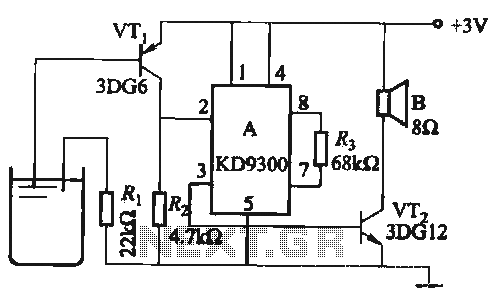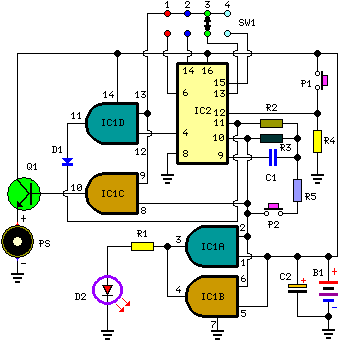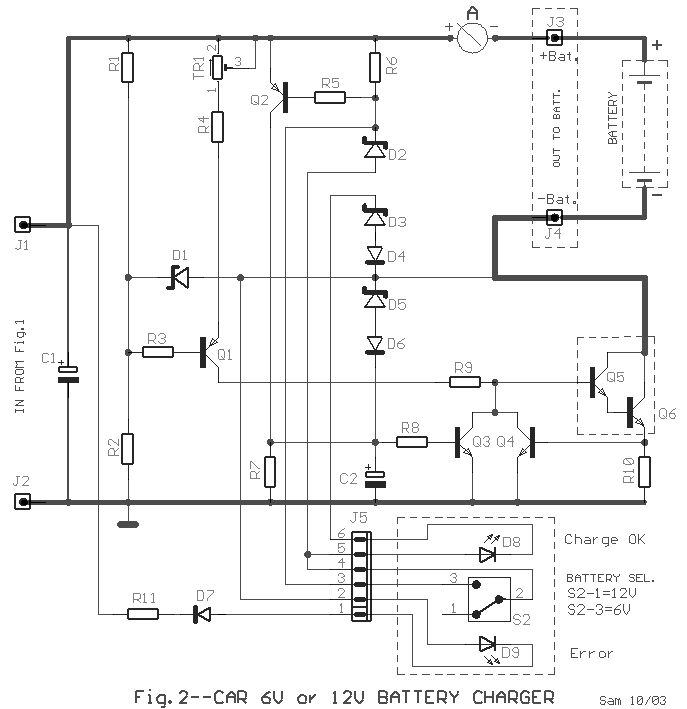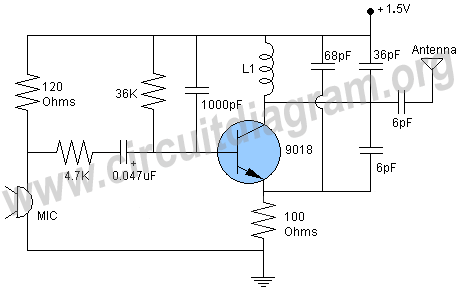
stereo headphone amplifier circuit schematic
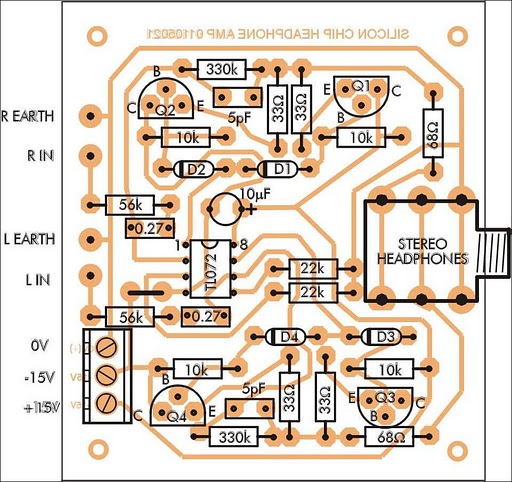
In addition to its primary function as a headphone amplifier, this circuit can be utilized for various applications requiring a wide bandwidth low-power amplifier. It is designed around an operational amplifier (op-amp), with its output current enhanced by a pair of transistors.
This circuit employs an operational amplifier as the core component, which is known for its high input impedance and low output impedance characteristics. These properties make it suitable for amplifying weak signals without significantly loading the source. The op-amp is configured in a non-inverting mode, allowing for a gain greater than one, which is essential for amplifying audio signals effectively.
To further increase the output current capability, which is critical in driving headphones or other loads, two transistors are incorporated into the design. These transistors function as a current buffer, allowing the circuit to drive higher current loads without compromising the performance of the op-amp. The transistors are typically arranged in a complementary push-pull configuration, which improves efficiency and reduces distortion.
The circuit's bandwidth is determined primarily by the op-amp and the external components, such as resistors and capacitors, used in the feedback loop. Careful selection of these components ensures that the amplifier maintains a flat frequency response over the desired audio range, typically from 20 Hz to 20 kHz.
Power supply considerations are also crucial; the circuit should be powered by a regulated supply to minimize noise and ensure stable operation. Bypass capacitors may be placed close to the power pins of the op-amp to filter out high-frequency noise, further enhancing performance.
Thermal management should be considered, especially if the circuit is expected to operate at high output levels for extended periods. Adequate heat sinking for the transistors may be necessary to prevent thermal runaway and ensure reliable operation.
Overall, this circuit design is versatile and can be adapted for various low-power amplification needs beyond headphone amplification, making it a valuable addition to audio and signal processing applications.Apart from the obvious usage as a headphone amplifier, the circuit can be used for a range of applications where a wide bandwidth low power amplifier is needed. The circuit is based on an opamp, with its output current boosted by a pair of transistors.. 🔗 External reference
This circuit employs an operational amplifier as the core component, which is known for its high input impedance and low output impedance characteristics. These properties make it suitable for amplifying weak signals without significantly loading the source. The op-amp is configured in a non-inverting mode, allowing for a gain greater than one, which is essential for amplifying audio signals effectively.
To further increase the output current capability, which is critical in driving headphones or other loads, two transistors are incorporated into the design. These transistors function as a current buffer, allowing the circuit to drive higher current loads without compromising the performance of the op-amp. The transistors are typically arranged in a complementary push-pull configuration, which improves efficiency and reduces distortion.
The circuit's bandwidth is determined primarily by the op-amp and the external components, such as resistors and capacitors, used in the feedback loop. Careful selection of these components ensures that the amplifier maintains a flat frequency response over the desired audio range, typically from 20 Hz to 20 kHz.
Power supply considerations are also crucial; the circuit should be powered by a regulated supply to minimize noise and ensure stable operation. Bypass capacitors may be placed close to the power pins of the op-amp to filter out high-frequency noise, further enhancing performance.
Thermal management should be considered, especially if the circuit is expected to operate at high output levels for extended periods. Adequate heat sinking for the transistors may be necessary to prevent thermal runaway and ensure reliable operation.
Overall, this circuit design is versatile and can be adapted for various low-power amplification needs beyond headphone amplification, making it a valuable addition to audio and signal processing applications.Apart from the obvious usage as a headphone amplifier, the circuit can be used for a range of applications where a wide bandwidth low power amplifier is needed. The circuit is based on an opamp, with its output current boosted by a pair of transistors.. 🔗 External reference
